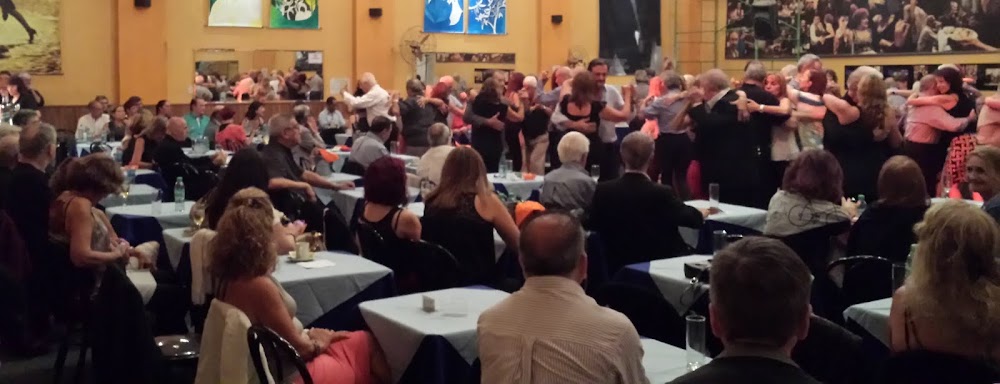Another city also has problems. A new DJ complained that they'd been barred from DJing at a local practica.
Well, I said, laughing, with perhaps less sympathy than he had hoped for ...if you mix up vals and tango in a tanda you can't be that surprised.
He'd fixed that, apparently. It wasn't the issue.
In central Scotland this is not quite the gross faux pas it would be in most other places. The "best" DJ in the rival city regularly skips milonga tandas, plays tandas of varying numbers of tracks, plays two tandas of the same orchestra, plays with variable volume, according to whether they are dancing or not. Almost anything goes around here - or did until people started dropping away from that event, presumably leading to the cuts just mentioned.
Crikey, if that wasn't the issue, how much worse can it be?
Apparently, the tracks hadn't been traditional enough.
I snorted. But it isn't a traditional practica.
One of the the organiser's dance partners plays the least traditional music I have ever heard - so alternative I stopped going to their, separate, event years ago. And that is why the new DJ had played some alternative music. He claimed people said they liked that. I can believe it. They always have liked alternative music. But someone complained.
And why beholdest thou the mote that is in thy brother's eye, but considerest not the beam that is in thine own eye?
Complaints are a damaging thing in a small community where everyone more or less knows one another. Alternatively, one can put up with it or walk away.
I have never heard a fully traditional set there. They are wholly mixed. Some of DJs play wildly alternative music. The most traditional DJ I can think of also plays an assortment of obscure tracks.
I asked if the newly "traditional" practica was advertised as such? Apparently not.
I asked if everyone who goes knew about the new approach. Again, apparently not. Lots of people there like a mix, which is why he had played to that demand.
This problem is twofold. One, advertising. Two, understanding.
If an event advertises the kind of music they play then everything should be clear to the DJ and to the dancers. This event has not ever, as far as I know advertised the kind of music that is played. I guess they assume people like what there is or don't care that much and it isn't worth advertising it for visitors. So the music could be anything - and often is. It has been like that as long as I can remember, not just there but everywhere in that city. That puts off most good dancers and those are the two main reasons I don't often go - the music and the dancing. These often track each other: alternative music / poor dancing; traditional music / better dancing. I laughed ruefully when he said the tango trousers of my favourite dancer there had apparently been eaten by moths. I could understand why.
Second, most people, and particularly in that city, think "traditional" tango means "old" tango, pre 1960, say. It doesn't. Traditional means the music people have traditionally, in Argentina, danced to - and that is a subset of "old".
Given there is confusion about what "traditional" means and there is no advertising of "traditional tango" anyway, there is apparently a mismatch of expectation between the organisers and, in this case, the shipwrecked DJ. Clarity is what is needed, all round.
If, for instance an event started to be advertised as traditional and did what it said on the tin, maybe more people would become interested.
Similarly, if someone like Cacu Lucero appeared and started to run his exploratory tango events, to a mix of music in the way that I saw him do that, again I would be interested. They are entirely different creatures and I am interested in both.
But the "discontinued" DJ's nose was out of joint. That eventually tends to lead to people dropping out or going elsewhere.


